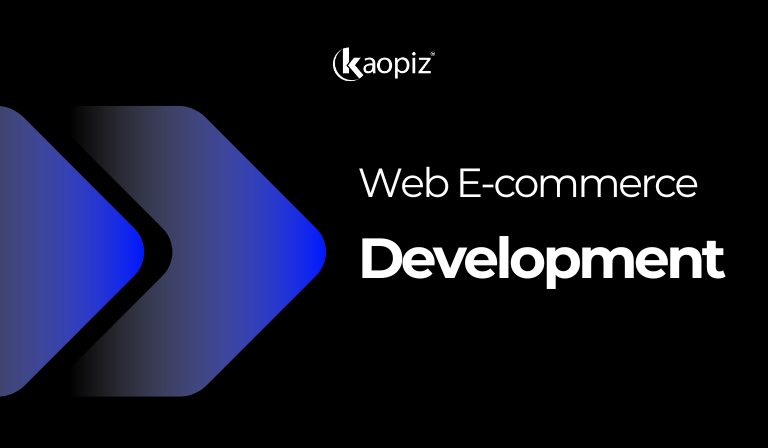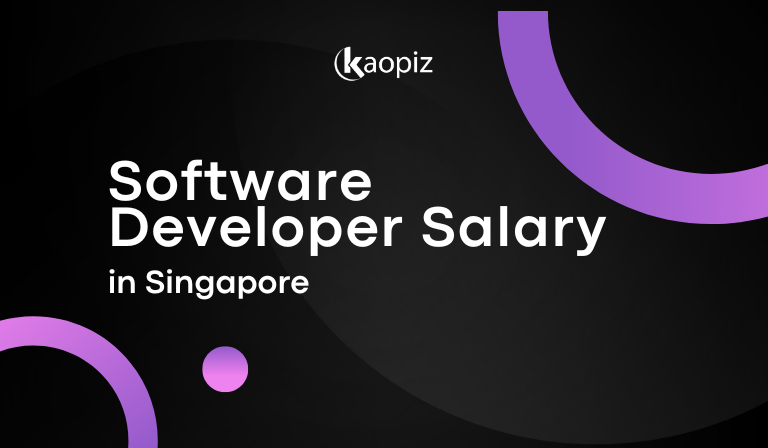10 IT Outsourcing Problems and Solutions for Singapore Businesses [2025]
As Singapore businesses accelerate their digital transformation, IT outsourcing has become a strategic solution to overcome local talent shortages, reduce operational costs, and scale faster. But while outsourcing offers clear advantages, it also comes with its own set of challenges—especially in Singapore’s high-performance, fast-paced business environment.
In this 2025 guide, we break down the Top 10 IT outsourcing problems faced by Singapore companies, and more importantly, share practical solutions to overcome them—so you can unlock the full value of outsourcing with confidence.
Table of Contents
- Why Singapore Businesses Are Turning to IT Outsourcing in 2025
- Top 10 IT Outsourcing Problems Faced by Singapore Companies (+Solutions)
- Miscommunication and Misaligned Expectations
- Scope Creep and Budget Overruns
- Subpar Quality of Deliverables
- Vendor Lock-In
- Data Security and Compliance Risks
- Cultural Differences
- Hidden or Unexpected Costs
- Lack of Visibility and Control
- Slow Onboarding and Ramp-Up
- Choosing the Wrong IT Outsourcing Partner
- Why Kaopiz Is a Trusted IT Outsourcing Partner for Singapore
- Conclusion
- FAQs
Why Singapore Businesses Are Turning to IT Outsourcing in 2025
In 2025, the IT outsourcing market in Singapore is projected to generate $5.19 billion in revenue, highlighting a strong upward trend. Demand is high in sectors such as finance, healthcare, and logistics, where robust digital infrastructure is essential to maintaining competitive operations.

Here are the key reasons why IT outsourcing trends are gaining traction in Singapore:
- Severe Tech Talent Shortage
Despite government efforts to boost tech skills, demand continues to outpace supply. Roles like software developers and AI specialists are increasingly hard to fill.
Outsourcing opens access to a global talent pool with specialized expertise, allowing companies to fill gaps quickly without compromising quality.
- High Local Hiring Costs
Singapore’s high standard of living comes with premium salary expectations. Hiring full-time developers, especially senior-level engineers, often exceeds budget constraints.
Outsourcing can reduce development costs by 40–60% compared to hiring locally in Singapore, while also offering faster onboarding and operational flexibility.
- Faster Time-to-Market
In a competitive landscape, speed matters. Delays in hiring or onboarding can lead to missed opportunities and slower product rollouts.
With IT outsourcing, businesses can start development almost immediately, leveraging experienced offshore teams who are already trained and project-ready.
- Focus on Core Business
Managing an in-house tech team requires ongoing recruitment, training, and oversight. This can distract leadership from business strategy and innovation.
IT outsourcing allows companies to delegate technical execution while internal teams focus on growth, customer service, and market expansion.
- Access to Latest Technologies
Outsourcing firms often specialize in modern tech stacks such as AI, blockchain, cloud computing, and IoT. Many have experience working across industries and offer valuable consulting alongside development.
This enables Singapore businesses to innovate with lower risk, leveraging proven expertise without the overhead of in-house R&D.
Top 10 IT Outsourcing Problems Faced by Singapore Companies (+Solutions)
While IT outsourcing offers significant advantages, it’s not without its pitfalls—especially in Singapore’s fast-paced, high-expectation business environment. Below are the top 10 outsourcing problems and solutions for Singapore businesses in 2025.
Miscommunication and Misaligned Expectations
Miscommunication is one of the most frequent IT outsourcing issues and concerns, especially when working with offshore teams. Time zone differences, language barriers, and vague project specifications often result in misunderstandings around deliverables, timelines, or technical requirements. This can cause costly rework, delays, or frustration on both sides.
Example:
A Singapore-based retail startup outsourced a mobile app project to a foreign vendor. While the team had strong technical skills, they misunderstood the client’s UX priorities due to limited interaction. As a result, after three sprints, the app’s UI looked cluttered and didn’t meet local user expectations, forcing the client to request major revisions, costing time and budget.
How to Overcome It:
- Create detailed documentation from the beginning, including functional requirements, user stories, wireframes, and acceptance criteria.
- Use Agile methodology with sprint planning, daily standups, and demo reviews to keep everyone aligned and responsive to change.
- Assign a bilingual Bridge System Engineer (BrSE) or local Project Manager who can bridge cultural and communication gaps between teams and ensure your business expectations are clearly conveyed and understood.
- Leverage collaboration tools like Jira, Confluence, and Slack to centralize discussions and track decisions in real time.
Scope Creep and Budget Overruns
Scope creep occurs when new features or changes are continuously added during development without proper review, often leading to missed deadlines and inflated costs. In Singapore’s cost-sensitive business environment, the problems of outsourcing — unexpected overruns can derail even the most promising outsourcing engagements.

Example:
An SME in Singapore outsourced a web-based internal system to an offshore development team. Midway through the project, internal stakeholders kept requesting small but frequent changes—adding new fields, modifying workflows, and redesigning the dashboard. Since these weren’t formally tracked, the development timeline stretched over a month, and costs exceeded the original estimate by 40%.
How to Overcome It:
- Define a clear and detailed scope in the Statement of Work (SOW) from the start, including all core features, timelines, and exclusions.
- Implement a formal change request process to evaluate the impact of new requirements on budget and schedule before approval.
- Use Agile project management to time-box work into sprints, enabling better prioritization and cost tracking.
- Maintain a single point of contact who consolidates feedback from internal teams to avoid conflicting or duplicated requests.
Subpar Quality of Deliverables
Delivering poor-quality code, buggy applications, or incomplete features is one of the major challenges of outsourcing in Singapore. This often stems from vendors cutting corners, assigning underqualified developers, or lacking proper quality assurance processes. For Singapore companies that value reliability and precision, low-quality output can lead to reputational damage and costly rework.
Example:
A logistics company in Singapore hired an offshore vendor to develop a custom shipment tracking system. Although the project was completed on time, the application was riddled with bugs, failing to display real-time updates, crashing under heavy user load, and missing key validations. The client had to spend additional time and money fixing the issues post-launch, delaying their digital rollout by 6 weeks.
How to Overcome It:
- Vet vendors thoroughly before engagement. Ask for code samples, conduct technical interviews, and check previous project references.
- Choose partners with recognized certifications like ISO 9001 (quality management) and ISO/IEC 27001 (information security).
- Set up regular code reviews, unit testing, and QA checkpoints throughout the project lifecycle.
- Use a staging environment to test features thoroughly before deployment.
- Define clear quality KPIs such as defect rates, test coverage, and performance benchmarks.
Vendor Lock-In
Vendor lock-in is one of the problems with outsourcing software development. It happens when a business becomes overly dependent on one partner, making it difficult, risky, or expensive to switch providers. This outsourcing challenge often occurs due to a lack of documentation, proprietary tools, or exclusive access to source code and infrastructure.

Example:
A fintech company in Singapore outsourced the development of a customer onboarding system. However, the vendor stored all code in their own private repositories and used proprietary frameworks unfamiliar to other teams. When the company wanted to switch providers due to rising costs, they faced massive delays and additional expenses just to migrate and re-engineer the existing system.
How to Overcome It:
- Negotiate clear IP ownership and data access rights in the contract from the beginning.
- Use open standards and widely adopted technologies rather than vendor-specific frameworks or tools.
- Request access to source code repositories (e.g., GitHub, GitLab) from day one and insist on regular documentation updates.
- Schedule periodic knowledge transfers and ensure your internal team or third party can understand and manage the system independently.
- Avoid long-term contracts unless the vendor has proven reliability and alignment with your business goals.
Data Security and Compliance Risks
When outsourcing IT development—especially internationally—data security is a critical concern. Singapore businesses must adhere to strict regulations such as the PDPA, and in sectors like fintech and healthcare, additional standards like PCI-DSS or HIPAA. Partnering with vendors lacking proper security measures can result in serious outsourcing mistakes, including data breaches, legal consequences, and reputational damage.
Example:
A Singapore-based healthtech startup outsourced part of its mobile app development to an offshore vendor without conducting a security audit. Months later, a misconfigured database led to a leak of patient health records, resulting in an investigation by Singapore’s PDPC and a loss of client trust.
How to Overcome It:
- Partner only with vendors that have proven security certifications, such as ISO/IEC 27001 or SOC 2.
- Sign robust NDAs and Data Processing Agreements (DPAs) that clearly define data ownership, protection responsibilities, and breach protocols.
- Ensure compliance with PDPA and relevant industry standards by reviewing the vendor’s development practices, data storage policies, and employee access controls.
- Implement secure coding practices and regular penetration testing during development.
- Use encrypted communication channels and secure cloud infrastructure with defined access permissions and audit logs.
Cultural Differences
Cultural differences may seem minor at first, but they represent one of the key outsourcing challenges. Variations in work style, decision-making processes, response times, and attitudes toward hierarchy can significantly impact communication and productivity, especially for Singapore companies operating in a fast-paced, precision-driven environment.

Example:
A Singapore logistics firm outsourced a web portal development project to a vendor in another region. The local team expected fast, proactive communication and immediate updates on blockers. However, the offshore team hesitated to raise issues early due to a more hierarchical company culture, resulting in last-minute surprises and delayed delivery.
How to Overcome It:
- Invest time in cultural onboarding—help your offshore team understand your work values, response expectations, and business etiquette.
- Choose a vendor experienced with the Singapore market (e.g Kaopiz), familiar with local expectations and business communication norms.
- Establish regular check-ins, retrospectives, and feedback loops to build trust, reduce hesitation, and encourage openness.
- Use collaboration tools that promote transparency, like Slack, Jira, or Microsoft Teams, to create a shared workspace with clear visibility.
Hidden or Unexpected Costs
Many Singapore companies choose IT outsourcing to control costs, but hidden fees can quickly erode those savings. These software outsourcing problems may include extra charges for bug fixes, urgent support, infrastructure setup, post-deployment maintenance, or unclear licensing terms. In the absence of a transparent pricing model, businesses may end up spending far more than planned.
Example:
A Singapore-based e-commerce startup outsourced the development of a custom platform under a fixed-price contract. However, once the MVP was delivered, they were charged separately for API integrations, bug resolution, and performance optimization—costs that weren’t clearly defined in the initial proposal. The final bill was nearly double the original quote.
How to Overcome It:
- Request a detailed cost breakdown upfront, including post-launch maintenance, bug fixing, infrastructure, and third-party tools.
- Clarify what is included vs. out-of-scope in the contract and agree on how additional work will be estimated and billed.
- Use transparent pricing models such as Time & Materials (T&M) for evolving projects or clearly bounded fixed-price models for well-defined scopes.
- Define an escalation matrix and support SLAs to avoid surprise charges for after-hours or urgent tasks.
Lack of Visibility and Control
One of the challenges in outsourcing is to monitor progress, track deliverables, and ensure accountability. Without real-time access to project updates or clear communication structures, projects can go off track, leading to delays, misaligned outcomes, and a lack of trust between stakeholders.

Example:
A Singapore-based logistics company outsourced the development of an internal operations platform. However, they received updates only during bi-weekly calls, with no access to the task board or testing environment. Midway through the project, they discovered key modules were built on outdated assumptions, requiring rework that delayed the launch by nearly a month.
How to Overcome It:
- Use cloud-based management tools to gain real-time visibility into progress, blockers, and priorities.
- Set up clear workflows and milestones, with demo reviews at the end of each sprint to ensure alignment.
- Establish regular check-ins and reporting cadences, such as weekly syncs, burn-down charts, and written summaries.
- Assign a dedicated point of contact or local project coordinator to represent your business interests and escalate issues promptly.
Slow Onboarding and Ramp-Up
Even after selecting the right outsourcing partner, delays in onboarding and ramping up the development team can stall momentum. Common causes include unclear documentation, limited access to internal systems, and a lack of structured knowledge transfer. For Singapore businesses operating in competitive industries, a slow start can mean lost opportunities and missed go-to-market deadlines.
Example:
A Singapore-based fintech company partnered with an offshore vendor to accelerate the launch of a digital lending platform. However, due to disorganized onboarding—unclear API documentation, inconsistent handovers, and delayed access to staging environments—the development team took over a month to become productive, pushing the launch date back 6 weeks.
How to Overcome It:
- Prepare a structured onboarding checklist including system access, tech stack overviews, workflow explanations, and security protocols.
- Create shared documentation hubs using tools like Confluence or Notion to ensure consistent knowledge sharing.
- Start with a small pilot phase or Proof of Concept (PoC) to let teams familiarize themselves with the business domain before scaling up.
- Assign an internal point of contact to support knowledge transfer and quickly resolve blockers during the first few weeks.
Choosing the Wrong IT Outsourcing Partner
One of the most critical—and costly— outsourcing problems a company can make is partnering with an outsourcing vendor that lacks the right experience, processes, or cultural fit.
A poor choice can lead to miscommunication, low-quality deliverables, missed deadlines, and ultimately, project failure. In Singapore’s competitive business environment, the consequences of such misalignment can be damaging both financially and reputationally.

Example:
A Singaporean SaaS startup chose the lowest-bidding vendor to build their MVP. Lacking cloud expertise, the vendor delivered a system that failed under user load, forcing the startup to rebuild with another partner, doubling both timeline and budget.
How to Overcome It:
- Outsource smartly by conducting a thorough vendor evaluation, including technical interviews, reference checks, and a review of past work.
- Look for outsourcing partners with domain experience, especially in your industry (e.g., finance, logistics, healthcare).
- Prioritize transparency, responsiveness, and cultural alignment, not just cost.
- Start with a small engagement or trial project to evaluate communication style, delivery quality, and process adherence before committing long-term.
- Ensure the vendor follows standardized frameworks (e.g., Agile, DevOps) and holds relevant certifications like ISO 9001 or ISO/IEC 27001.
Why Kaopiz Is a Trusted IT Outsourcing Partner for Singapore
At Kaopiz, we understand the unique expectations of Singaporean businesses, where speed, quality, security, and communication are non-negotiable. As a Vietnam-based IT outsourcing company with over 300 engineers and a proven record of delivering 500+ successful projects, we’ve become a trusted technology partner for startups, SMEs, and large enterprises across Singapore.
Why Choose Kaopiz
Here’s why Singapore companies choose Kaopiz:
- Strong Technical Expertise: Our engineers specialize in full-cycle software development—from web and mobile app development to cloud migration and AI development. We build with the latest tech stacks and follow international coding and security best practices.
- Bilingual Project Management and Bridge SEs: To minimize miscommunication and ensure smoother collaboration, we provide bilingual BrSEs and dedicated PMs who understand both the technical and business context of Singapore-based clients.
- Agile, Transparent, and Scalable Delivery: We follow Agile methodologies with full project transparency. Clients get access to real-time tracking tools and regular demos.
- Certified and Secure: Kaopiz is ISO 9001 and ISO/IEC 27001 certified, ensuring we deliver consistent quality while protecting your data and intellectual property.
From fast-growing startups to multinational corporations, businesses in Singapore trust Kaopiz to deliver high-quality, cost-effective services—on time, with no surprises—and as a reliable partner offering solutions for outsourcing problems.
Case study: Muscle Health Management
QuantumTX is a Singapore-based medtech innovator specializing in Magnetic Muscle Energetic Training (MMET) technology. Their proprietary Magnetic-Mitohormesis platform delivers exercise-like benefits without physical strain, transforming fitness into medicine. The company provides muscle health programs via specialized devices used in wellness and clinical settings.

Challenge:
QuantumTX relied on manual workflows for client management and scheduling, leading to inefficiencies, errors, and limited scalability. Their dependency on third-party systems also restricted customization and operational flexibility.
Our Solutions:
Kaopiz partnered with QuantumTX to develop a custom web and mobile application tailored to their muscle health program:
- The web app supports administrators and operators with client onboarding, appointment scheduling, payment processing, and real-time analytics.
- The mobile app empowers users to book sessions, track their muscle health progress, and access personalized educational content—anytime, anywhere.
Results:
- 40% reduction in administrative processing time
- 60% increase in user engagement via mobile app
- Real-time analytics for better decision-making
- Consistent experience across web and mobile platforms
Conclusion
IT outsourcing offers significant advantages for Singapore businesses—from cost savings and faster delivery to access to specialized expertise. However, to fully realize these benefits, it’s essential to understand and proactively address common outsourcing problems such as miscommunication, scope creep, quality issues, and security risks.
This article offers practical insights on how to overcome outsourcing problems. By selecting the right partner, setting clear expectations, and establishing strong processes, businesses can transform outsourcing risks into strategic opportunities.
Ready to outsource smarter? Contact us today to explore how we can support your digital transformation journey.
FAQs
Look for vendors with a proven track record, relevant domain experience, and strong communication practices. Check for certifications like ISO 9001 and ISO/IEC 27001, request client references, and start with a pilot project to assess delivery quality.
For example, Kaopiz – a trusted IT outsourcing partner has delivered over 500 successful projects for clients across Singapore, Japan, and beyond, with transparent processes and bilingual project management.
An outsourcing contract should cover project scope, timeline, pricing model, deliverables, IP ownership, confidentiality (NDA), change request process, support terms, and security requirements.
Costs vary depending on project complexity and tech stack. On average, outsourcing to Southeast Asia can reduce costs by 40–60% compared to hiring locally in Singapore.
Yes. Hiring a mid-level developer locally may cost SGD 6,000–10,000/month, whereas outsourcing to trusted vendors like Kaopiz can cost significantly less without compromising quality. Plus, you save on overheads like recruitment, office space, and equipment.
Absolutely. You can outsource specific modules, MVPs, maintenance tasks, or even just testing. Partial outsourcing is a great way to scale without committing your full in-house resources. For instance, Kaopiz supports flexible engagement models—whether you need a full dev team or just a few skilled engineers.
Trending Post





















No Comments yet!